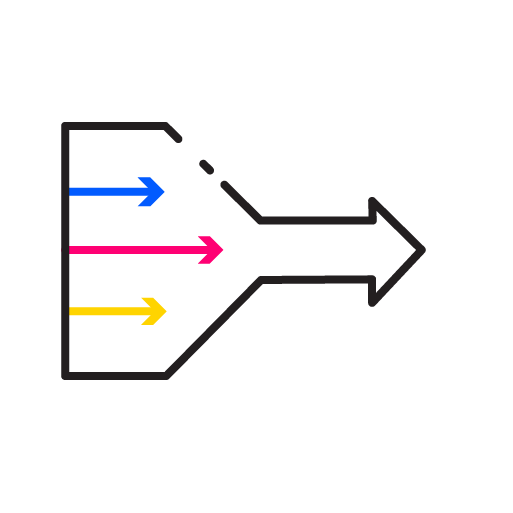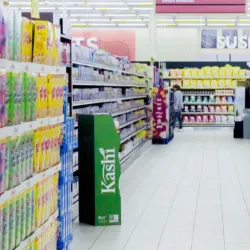Industry Knowledge
Become a Customer Magnet With Proactive Customer Service
Here’s why brands are shifting away from reactive to proactive customer service.
Customers are now pickier than ever. One bad experience, and they will highly likely switch to your competitor. That’s why extraordinary customer service is no longer a nice-to-have—it’s a critical differentiator.
More and more consumers are noticing the difference between brands with ‘good’ customer service and those that go the extra mile. But what’s the key difference between the two? One is always ready to go above and beyond with proactive customer service, while the other only stays reactive.
Let’s dive into some examples of reactive and proactive customer service and why delivering customer care preemptively, proactively, and consistently is critical.

What is proactive customer service?
Proactive customer support is the secret sauce that transforms customer service from good to extraordinary. It includes anticipating and addressing customer needs before they become problems, resulting in happier, satisfied, and loyal customers. Some examples involve providing solutions and support for customers to resolve issues without contacting customer support. This can be as simple as providing easy-to-use self-service options like an FAQ section that can help customers resolve issues without contacting customer support.
On the other hand, reactive customer service focuses solely on responding to customer issues after the customer raises them. In this approach, companies wait for customers to reach out with questions or problems and then work to provide solutions and support. It mainly includes responding to customer emails, phone calls, or social media messages.
Companies that provide proactive customer care take a more preemptive, forward-thinking approach, which makes for excellent customer experience (CX). Here are some examples of proactive customer service brands should start implementing today:
- Proactive Alerts and Updates:
- Keeping customers informed about their orders—whether something good or bad has happened—is a great way to provide proactive customer service. It’s a given to update customers when their orders have been shipped, but it’s even more important to let them know when there will be delays. Providing proactive alerts for delays or minor setbacks is a great way to help minimize frustrations and negative feedback.
- Personalized Recommendations:
- Notifying customers about products they may enjoy based on their order history is another way to give proactive customer care. Providing a tailored experience is a great way to improve retention of customers.
80%
of customers are likelier to buy from a company that provides personalized CX.
- Anticipating Customer Needs:
- Proactive customer service means anticipating and addressing customer needs before they become problems. For example, customers want to be immediately notified when suspicious activities are detected on their accounts.
- Customer Feedback:
- Proactively seeking out customer feedback through surveys, polls, or social media is a great way to show customers that you value their opinion and are committed to improving their experience.
What makes proactive customer service so important?
Today’s tenacious shoppers expect a lot more from brands. Reactive forms of customer service are considered table stakes these days. Companies that only provide reactive customer service may be perceived as slow to respond, uninterested in their customers' needs, or not prioritizing customer satisfaction.
Customers love hearing from brands first to receive customer support.
| 89% | of customers who received proactive customer service said they were pleasantly surprised and delighted by the brand’s initiatives. |
| 92% | of the customers said receiving proactive customer support helped them see the brand in a more positive light. |
| 76% | of customers who received proactive customer service said it motivated them to take positive actions such as leaving glowing reviews or making another purchase . |
Proactive customer service makes a brand more favorable than the next.
| 70% | of customers say that brands that have more proactive customer service are more favorable to them. |
| 87% | of customers say they want to experience proactive customer service and be reached out to by a brand. |
| 77% | of customers say good customer service will earn a brand customer loyalty. |
Customers simply expect it.
| 65%+ | have higher expectations for customer service now compared to years ago. |
| 63% | of consumers expect brands to have an idea of their unique needs and expectations. |
The importance of being proactive in customer service comes from creating a customer-centric culture that ensures customers receive positive and consistent experiences. By being proactive, companies can prevent issues from escalating, reduce the number of support tickets or complaints, improve customer satisfaction and loyalty, and ultimately differentiate themselves from competitors who only provide reactive customer service. It’s the kind of customer service that can help brands build stronger relationships and improve customer satisfaction.
What proactive customer service looks like with Us
Proactive customer care is seen as the next-level evolution of customer service. At TaskUs, we’ve been delivering robust customer care preemptively and proactively before they made a name for it.
For instance, when one of the world’s biggest customer relationship management (CRM) companies partnered with Us to improve their customer satisfaction (CSAT), we took four critical steps to make sure we delivered beyond expectations:
- The period for training customer service teams was extended to include additional nesting, augmented hands-on teaching methods, and intensive 1-to-1 coaching to make sure they mastered the proactive CX mindset.
- We focused on reducing repeat calls by educating customers on effective self-service, saving time, and boosting CSAT scores.
- We deployed Teammates with the best qualities; they possessed high levels of empathy and innate abilities in interacting, assisting, and explaining information to others.
- We leveraged Business Intelligence (BI) and omnichannel support to analyze past customer experiences and guide our Teammates in identifying potential user issues and proactively resolving them independently.
The results?

$2,580 ARR/FTE

93.8% CSAT score—a 20% increase from the initial start date

400 FTEs with an optimized, web-based training program

CASE STUDY
Four Ways to Create a Proactive Support Model that will Drive Customer Loyalty
Download Case StudyThe main difference between proactive and reactive customer service is the level of initiative and forward-thinking in ensuring customers only receive the best experiences a brand can offer. And that’s what TaskUs is all about. Recognized by the Everest Group as the World's Fastest Business Process (Outsourcing) Service Provider in 2022 and with glowing reviews in Gartner Peer Insights Review, we’ve been a consistent provider of high CSAT scores and more.
- 5^The Netomi Pulse Report - State of Customer Service in 2021
- 7^TaskUs Customer Service BPO Services Reviews
References
We exist to empower people to deliver Ridiculously Good innovation to the world’s best companies.
Services








